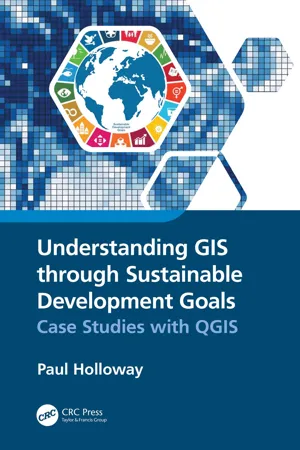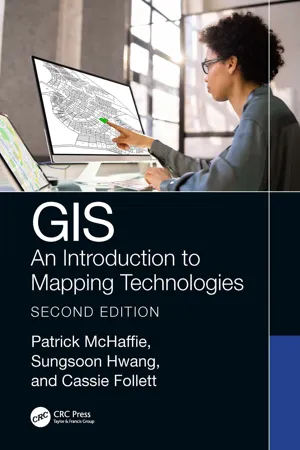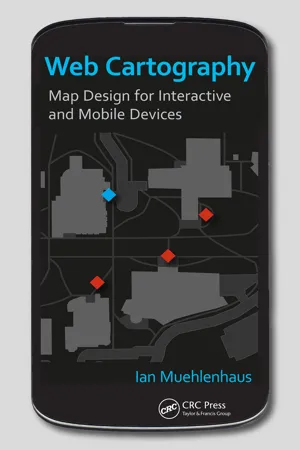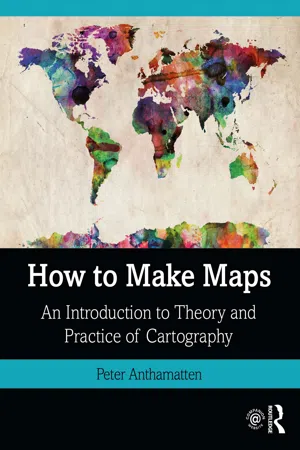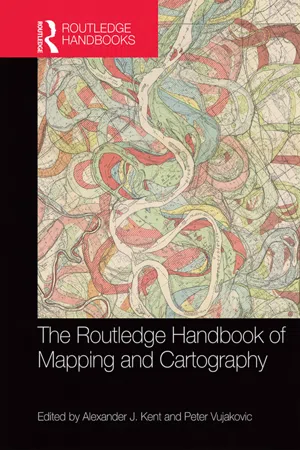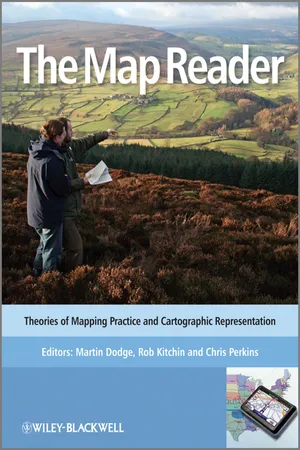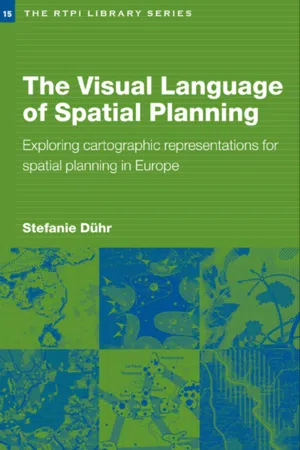Geography
Thematic Maps
Thematic maps are specialized maps that focus on a specific theme or topic, such as population distribution, climate, or land use. They use visual elements like colors, symbols, and patterns to represent the spatial distribution of the chosen theme, making it easier to understand and analyze geographic patterns and relationships. Thematic maps are valuable tools for studying and communicating spatial data.
Written by Perlego with AI-assistance
Related key terms
10 Key excerpts on "Thematic Maps"
- eBook - ePub
Understanding GIS through Sustainable Development Goals
Case Studies with QGIS
- Paul Holloway(Author)
- 2023(Publication Date)
- CRC Press(Publisher)
Thematic can be simply defined as being related to a subject matter, meaning the geographic feature or subject matter of the study is the theme of the map. There are several different types of Thematic Maps, including graduated symbols, choropleth, dot distributions, change, and flow maps. In this section, we develop graduated symbol maps in this chapter, choropleth maps in Chapter 8, and change maps in Chapter 9. Graduated Symbols – In these maps, shapes of different sizes are used to simplify and represent more complex patterns, such as amount. In this chapter, we represent the amount of litter found at specific locations, with points containing more litter represented by larger points. This provides a visual aid to support spatial cognition, as patterns between quantities and location can be discerned almost immediately. Such maps have also been referred to as proportional point symbols and bubble maps. Choropleth Maps – These maps use a graduated color palette (or symbology) to represent quantitative data that are aggregated over predefined regions, such as countries, states, or counties. In Chapter 8, we use cartography to investigate global school closures, representing countries which had a larger disruption of education during the Covid-19 pandemic visualized using darker colors. Color palettes are often distinguished by hue or lightness to support spatial cognition of which locations have larger or smaller aggregated values. Change Maps – These maps are a subset of choropleth maps, as these again occur over an aggregated geographic unit. However, the main feature that is visualized pivots around a central value, such as zero. Examples include land cover change, with a percentage increase or decrease over time being visualized. We develop change maps for forest cover in Chapter 9 - eBook - ePub
Map Librarianship
A Guide to Geoliteracy, Map and GIS Resources and Services
- Susan Elizabeth Ward Aber, Jeremy Aber(Authors)
- 2016(Publication Date)
- Chandos Publishing(Publisher)
While all maps are concerned with the spatial layout of phenomena, many maps fall into a different category, known as Thematic Maps. These maps explore specific topics or themes of data. Reference maps exist to tell us where things are, while Thematic Maps exist to communicate a specific message about the world. Thematic Maps use general reference information to frame their messages, but only inasmuch as it is useful for putting thematic information in its appropriate context. For example, a map showing population density per county in the state of Tennessee will include county boundaries, but likely will not show every city, waterway, and road in the state. An overload of information can make things visually confusing, potentially to the point of obscuring the intended message. Therefore, on a thematic map, information not directly related to the message is generally not included. One of the most famous examples of a thematic map is the cholera map based on John Snow’s research during an 1854 outbreak in London, see Fig. 2.1. Snow was convinced that contaminated water was the vector by which the disease was being spread, and his geographic analysis is credited with helping to end the outbreak, as well as giving rise to the field of epidemiology (Vinten-Johansen, 2003). While the map in Fig. 2.1 uses general reference information in the form of London streets, the primary purpose is to present medical data in support of the contaminated water theory. Many Thematic Maps follow this approach, and can be considered tools for answering questions about the nature of the world. A more modern example could be a thematic map exploring poverty rates at the county level in the United States. This map would not only answer questions such as “where does poverty exist?,” but would also act as a tool for confronting the issue - eBook - ePub
GIS
An Introduction to Mapping Technologies, Second Edition
- Patrick McHaffie, Sungsoon Hwang, Cassie Follett(Authors)
- 2023(Publication Date)
- CRC Press(Publisher)
A reference map shows as many features as possible as long as the map size allows. A topographic map (Figure 5.1) showing both natural and cultural features belongs to a reference map. In contrast, a thematic map picks a particular theme or variable (e.g., primary language, population density, GDP by country), and depicts the spatial distribution of the variable. A population density map (Figure 5.2) is an example of a thematic map. A reference map works like an encyclopedia, and a thematic map is more like an essay due to its emphasis on a particular topic. In the following, we focus on Thematic Maps, because they can be easily created based on field values from the attribute table in Geographic Information System (GIS). FIGURE 5.2 Choropleth map as a thematic map. (U.S. Census Bureau) In Figure 5.2, people per square mile is depicted as graduated shades at the level of counties (areal units), where the darker shades indicate higher population density. This type of map is called a choropleth map. “Choro” means area (region), and “pleth” means value. Hence, a choropleth map depicts “values assigned or constrained to areas” (e.g., population density by county). A choropleth map is also referred to as a graduated color map in GIS software. The population density map uses insets to show Alaska, Hawaii, and Puerto Rico. These three insets have different map projections and map scales, as indicated by the different scale bars in each of those insets. The legend on the right shows that the population density values are grouped into seven classes. This method of dividing quantitative data into classes is referred to as data classification in GIS and will be discussed in a later section. There are two types of Thematic Maps: qualitative maps and quantitative maps. The former maps categorical data (such as land cover and primary language), and the latter maps quantitative data (such as population density and temperature). Some maps only show the locations of features - eBook - ePub
Web Cartography
Map Design for Interactive and Mobile Devices
- Ian Muehlenhaus(Author)
- 2013(Publication Date)
- CRC Press(Publisher)
9 Thematic VisualizationIntroduction
Thematic cartography at its most basic is simply the graphic symbolization of spatial datasets concerning a particular theme over a base map. There are numerous types of thematic representations, or map styles, that can be used for spatial visualization (e.g., choropleth, dot, proportional symbol). Regardless of which form of representation is employed, all Thematic Maps are created by manipulating visual variables.As noted in Chapter 7 , most visual variables are only ideal for representing certain types of data. Thus, one of the first things to remember is that not all thematic representations are suitable for mapping all types of data. Be wary of using visual variables that do not accurately, or intuitively, highlight the nature of the information they are presenting.This chapter is devoted to helping people who are new to cartography learn more about the different types of thematic representations available to them. This chapter is also meant to help those who have a background in cartography better understand the idiosyncratic benefits and drawbacks of using different thematic representations in their Web maps. (There are several new hurdles confronting traditional representation techniques.) The next section reviews data and technology issues to consider when designing Thematic Maps for the Web. This is followed by a review of the most popular types of thematic representation. I also discuss the benefits for each type of representation. The chapter concludes with a brief discussion about the advantages and disadvantages of allowing map users to interact with and manipulate the thematic data that are represented. - eBook - ePub
- Jim Lindsay(Author)
- 2006(Publication Date)
- Routledge(Publisher)
All in all, then, maps do not simply reproduce information. They pass on selective messages, and they do so in a coded form that must be decoded for successful use, using a medium that we still do not fully understand. Even the most mundane of maps contains a lot of room for misinterpretation. The training and experience of professional cartographers enables them to work comfortably within a set of familiar conventions about how information is communicated. It tends to be forgotten that map users do not have this training and experience. Using a map is not intuitive. For example cartographers in the past regularly depicted buildings and other objects with oblique-view pictograms. The modern convention is to use a vertical plan view throughout, and some users find this level of abstraction difficult. Significantly enough, the older convention survives now mainly in maps designed to be ‘friendly’ and attractive to non-specialists. Graphicacy – the ability to read graphic images constructively – is a learned skill like numeracy and literacy, and uneducated map users may have a very poor awareness of what the map is meant to show and what the patterns actually represent.Maps are designed to work within specific contexts. They are tools designed for particular purposes, and the terminology used in the field reflects this. Navigational maps are often described as charts. The term ‘plan’ is used to describe detailed maps precise enough to mean that measurements taken from them can reliably be used in physical planning or civil engineering contexts. Highly stylised maps departing from conventional representation are often described as diagrams. It is also traditional to recognise a distinction between topographic (‘general’ in American usage) and thematic mapping. Topographic maps provide a general-purpose picture of the earth’s surface, mainly but not exclusively depicting visible surface features. Figure 7:1 uses a fictional landscape to show a typical topographic map panel using the conventions of the British Ordnance Survey. Thematic cartography produces maps designed to show distributions and relationships within particular areas of study. Thematic Maps may show highly abstracted patterns like the geography of educational scores or nationalistic attitudes.Cartography has shared in the intellectual debate that has affected all academic disciplines in the post-war period, although it would probably be fair to say that the discipline has accepted ideas from outside rather than being at the leading edge of intellectual development. This is not the place for a detailed interpretation of the way that this development has taken place, but readers who want to be better informed about it will find a useful discussion in the work of MacEachran (1995: 1–16). However a short summary will help provide a perspective. - eBook - ePub
How to Make Maps
An Introduction to Theory and Practice of Cartography
- Peter Anthamatten(Author)
- 2020(Publication Date)
- Routledge(Publisher)
The US government has been systematically surveying land to construct these maps since 1884. The maps include contour lines, which are lines that show points of equal elevation, to represent the terrain, as well as other features of general interest, such as roads, rivers, building footprints, and political boundaries. Starting 2009, the USGS began transferring its topographic maps to digital format, and you can now download and view the maps from its website (ngmdb.usgs.gov/topoview/viewer/). The UK has produced a comparable series of maps called the UK Ordnance Survey. Figure A.6 shows an example of excerpt of an Ordnance Survey map near the Wash in Lincolnshire. Thematic Maps Thematic Maps are designed with a specific purpose in mind. They are often intended to explore the spatial distribution of a selected phenomenon in the context of a larger project. Figure A.1, for instance, is an example of a map of the world that shows the under-five mortality rate for children by country. The purpose of the map is to examine patterns in health by exploring mortality rates. Some patterns in mortality immediately become clear: rates are low—less than 10 deaths per 1,000 births—in the wealthiest parts of the world, including Europe, North America, Japan, and Australia. Middle-income countries, in places such as Latin America and Asia, experience moderate levels of mortality, while central parts of Africa experience the highest rates. Like any well-designed map, a lot of information not critical to the task at hand is omitted. The map does not include major cities, rivers, or labels for the major bodies of water. It does, however, include everything the reader needs to see patterns in mortality symbolized by country to show the mortality rates. As such, it does a reasonably effective job achieving its purpose. There are numerous types of Thematic Maps, often defined around the main type of the symbol used - Alexander Kent, Peter Vujakovic, Alexander J. Kent, Peter Vujakovic(Authors)
- 2017(Publication Date)
- Routledge(Publisher)
For maps of the world or major regions of it, the choice of map projection you use is important. Given that the process of displaying the roughly spherical Earth on a flat plane unavoidably introduces distortions, it is usually appropriate to select a map projection which is either equal area, or one of a handful of widely used projections which are not strictly equal area but approximately so, and which keep the shape of the world familiar. Examples of equal-area projections to consider for maps of the world are the Mollweide and Eckert IV projections, and compromise projections often used are the Winkel Tripel, Robinson, and van der Grinten (usually clipped 80˚ North and South to exclude the polar regions which look very distorted). Some of the familiar projections once used, especially the Mercator and other rectangular projections, are not usually appropriate because the distortions in area lead to a map which is misleading, especially for distribution maps. The so-called Geographic Projection, which is the default projection of many GIS programmes, is a rectangular projection and not a very good one for a world map. There is a range of useful projections for continents and regions of the world, including conical projections for areas with a wider East–West extent than North–South, such as Europe or the United Sates. The addition of the graticule (the lines of latitude and longitude) is very helpful for map readers to see how the globe has been portrayed on the map.As a general rule, when compiling a map, the cartographer should always work by taking information from a larger scale to a smaller scale. This is because a smaller-scale map will have been generalized more than you need (generalization is explained below) and by blowing up a smaller-scale map, you cannot get out of it more detail than the scale of the original map allowed. The typical procedure is to scan a larger-scale map and then to reduce it digitally to the scale you need for the final graphic. Ensure that you include the scale bar on the map so that you can keep track of the reduced scale. Digital map data is also scalable, of course, but ensure that you acquire data of a comparable or slightly larger scale than the output scale.Thematic Maps are created by combining base-map information, which provides context, with symbols which show the theme of the map. For example, a population-density map will need a base map which shows the areas (countries, regions, census enumeration districts, and so on) for which the statistics have been gathered. The areas are then filled with a range of colours or gradations of one colour to convey information on population density. The base maps for Thematic Maps need enough information to show the setting for the theme but are usually selective and simplified versions of topographic maps, typically with coastlines, major settlements, and principal roads or hydrology shown.Data quality
The quality of source data is a thorny issue, because it can be very hard to assess but affects the quality of the map you produce. Source material varies in age, quality, and reliability. The comparison of several maps of an area may reveal important discrepancies in all sorts of aspects of the data. Frustratingly, a map that looks good may contain very poor quality data, as is discussed below. Using up-to-date sources is important, as recent maps should show new names, recently added features, and changes to human features (such as the current size of settlements, reservoirs) and natural features (such as changing lake shorelines). However, natural features such as relief and drainage generally do not change substantially, and if they are shown well on maps which are out of copyright, then it is useful to be able to use them.- eBook - ePub
The Map Reader
Theories of Mapping Practice and Cartographic Representation
- Martin Dodge, Rob Kitchin, Chris Perkins, Martin Dodge, Rob Kitchin, Chris Perkins(Authors)
- 2011(Publication Date)
- Wiley(Publisher)
Elements of Cartography first published in 1953, and running to six subsequent revised editions, elided topographic matters. Instead, thematic mapping based on quantitative data dominates the text. As a result, the distinction into thematic mapping, and topographic survey or general purpose mapping, became reified in the day-to-day practices of cartography as a profession: cartographers were most likely to be trained in the design of the former, not the latter. It is perhaps unsurprising then that most subsequent Anglo-American textbooks have also had very little to say about the design of topographic maps. And perhaps these trends are exacerbated in the real world production of maps, with a gradual retreat from state-funded national surveys in the face of increasing competition from commercialised and globalised map sources such as TeleAtlas (underpinning much of Google Maps coverage). So, maybe what has been termed the ‘blandscape’ of multinationally sourced and internet-served mapping will increasingly supplant the national design imaginary offered by printed topographic products (Kent 2009).The profusion of thematic cartography over the last century certainly reflects a changing aesthetic. Examining the timeline of significant data visualisation techniques, constructed by Michael Friendly and his collaborators, one is struck by the diversity of techniques that have been invented across many disciplines (Friendly and Denis 2010). Academic cartographers deploy choropleths, dasymmetric and dot distribution maps, isarithmic maps, proportional symbol maps, and cartograms, along with more novel multivariate geovisualisations encompassing the animated and multimediated data displays (Slocum et al . 2008). However, in practice, very few of these techniques have been deployed very much, or very well. Technological shifts such as desktop mapping packages and online geovisualisation have facilitated an emerging and radically different aesthetic, but paradoxically the same shifts have encouraged the mass profusion of often poorly designed thematic map output, centring around the use of off-the-shelf GI defaults and a limited number of map types.Notable amongst these techniques has been the choropleth map. First named in 1938 by J.K. Wright, the technique creates maps that depict an average value for each area. Areas allocated to the same class are shaded the same: data are classified. So the designer can change the number of classes, the classification algorithm and the nature of the shading variation or sequencing (Evans 1977). Many of these issues are related to data generalisation, a fact developed long ago by Jenks (1963, excerpted as Chapter 4). Choropleths have probably been more researched than any other cartographic technique: their inadequacies were well documented by Wright in 1938, and have been extensively researched by academic cartographers in the years since. The technique hides any variation within the spatial frame of each enumeration district and is very often used in an inappropriate manner. An unimaginable number of possible displays may be made from the same data (but all the evidence suggests most users are unaware of this wide range); and all too often the sampling frame, the spatial units themselves, are a given and not available for the user to change. - eBook - ePub
Landmarks in Mapping
50 Years of the Cartographic Journal
- Alexander Kent(Author)
- 2017(Publication Date)
- Routledge(Publisher)
Automation in the Preparation of Thematic Maps * W. R. TOBLEROriginally published in The Cartographic Journal (1965) 2, pp. 32–38.Automation is of particular importance in the construction of Thematic Maps, especially those derived from extensive statistical data. A staff member of the Department of Geography, University of Michigan, examines the fundamental problems involved, and shows how standard computer facilities are being used.The types of maps to which we wish to refer can be characterized in part by the following properties, as given by MacKay;1 (a) they are generally at a small scale; (b) they are commonly prepared from start to finish by one individual working on a research project and not by a large mapping agency; (c) often they are never printed or distributed at all as they are prepared solely to aid the researcher and exist only in manuscript form, like a scientist’s notebook; (d) when reproduced they usually appear along with an explanatory text in books, atlases, and periodicals designed for both specialized and general readers; only a small proportion are available for direct distribution or sale as separate map sheets to the public. To these general criteria one can add that (e) the information shown is often obtained from physical, social or economic surveys which differ considerably in method and in instrumentation from land surveying and from each other, and (f) that the information is often not directly visible in the field or is even not directly detectable by any means whatever at the location involved, but is instead derived from observational data by a series of more or less complicated manipulations suggested by the current theoretical knowledge in the subject matter area concerned.These six properties serve, pragmatically, to distinguish thematic cartography from, say, the production of a topographic map series. Automation, of course, is being investigated in relation to topographic mapping. The major efforts in this area seem to be directed toward the rapid preparation of topographic maps directly from aerial photographs. Reviews of this work have recently appeared in the literature, and will not be repeated here. - eBook - ePub
The Visual Language of Spatial Planning
Exploring Cartographic Representations for Spatial Planning in Europe
- Stefanie Dühr(Author)
- 2007(Publication Date)
- Routledge(Publisher)
see Plate 1 ).The interest in semiology and semiotics also led to an increasing recognition that all codes are polysemic in the sense of having two (or more) levels of meaning. While traditional cartographic theory presented the map as a purely denotative message,3 it is now unquestioned that maps and every individual sign can have other, possibly unintended, meanings than the one envisaged by the cartographer. The ‘connotation’ of signs describes the interaction that occurs when the sign elicits feelings or emotions in the user, which are often culture-dependent. For example, in cartography colour is frequently used to denote specific territorial entities, yet the choice of colour can also have profound effects on the symbolic meanings generated. Many of these choices are even intentional and play on culturally embedded connotations, as for instance the traditional colour given to maps of the British Empire, where the pale red/pink had connotations of ‘health/vigour’ (Vujakovic, 2002).MAPS AS SOCIAL CONSTRUCTIONS
Recent developments in cartography have gone well beyond the model of cartography as a communication system with maps as presentations of stable, known information. Cartography is now increasingly understood as operating in a field of power relations, and maps as being created in exploratory mapping environments in which knowledge is constructed. According to Crampton (2001: 235), two main developments in cartography have marked an epistemic break with the assumption that maps are unproblematic communication devices. These are (1) investigations of maps as practices of power-knowledge; and (2) ‘geographic visualisation’ (GVis), which uses the power of mapping to explore, analyse and visualise spatial datasets to better understand spatial patterns.
Learn about this page
Index pages curate the most relevant extracts from our library of academic textbooks. They’ve been created using an in-house natural language model (NLM), each adding context and meaning to key research topics.
